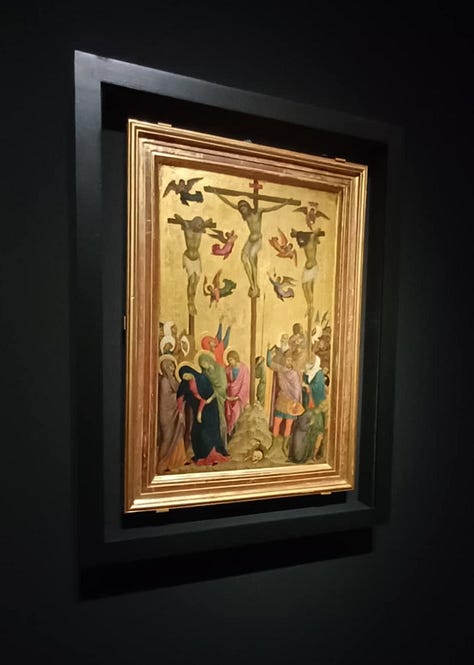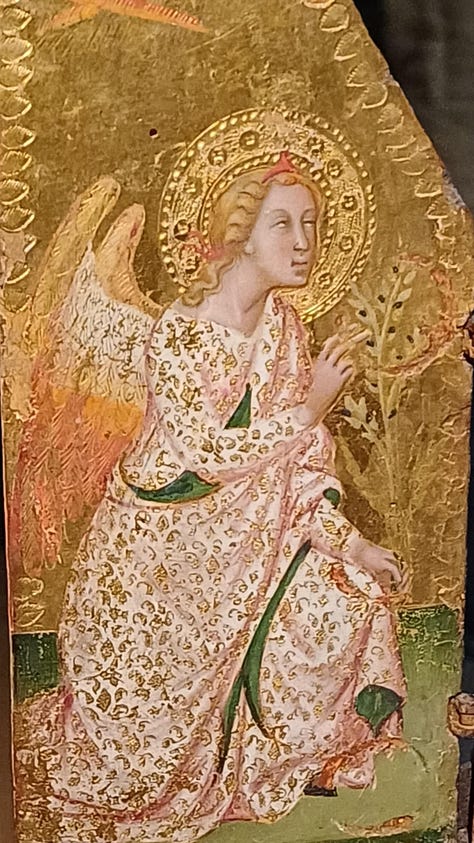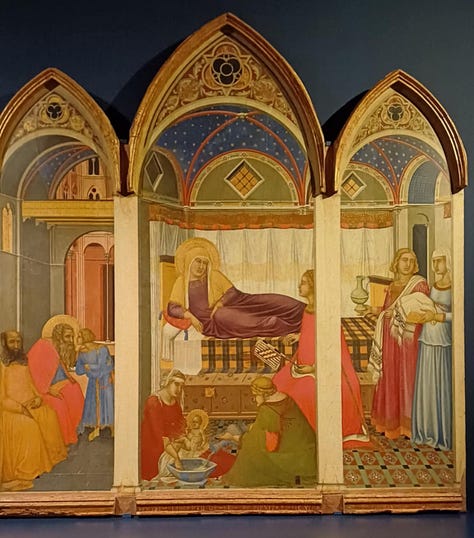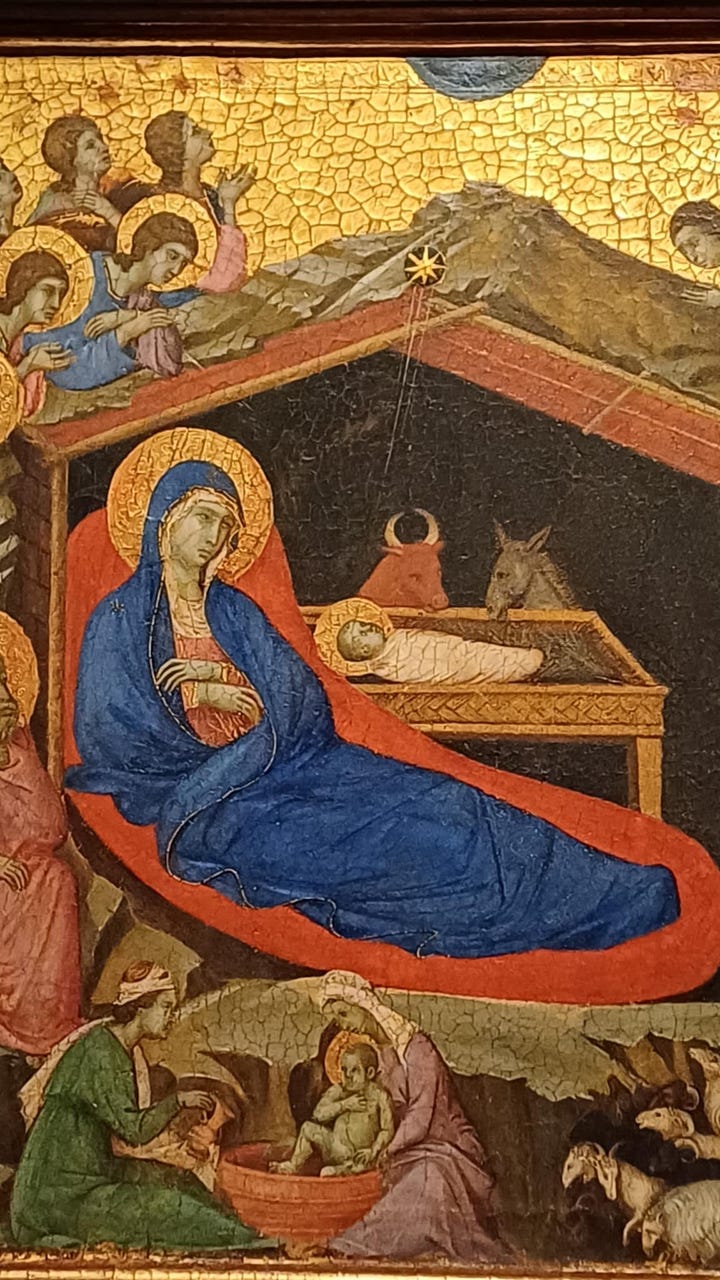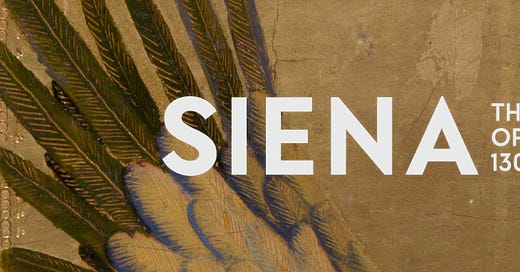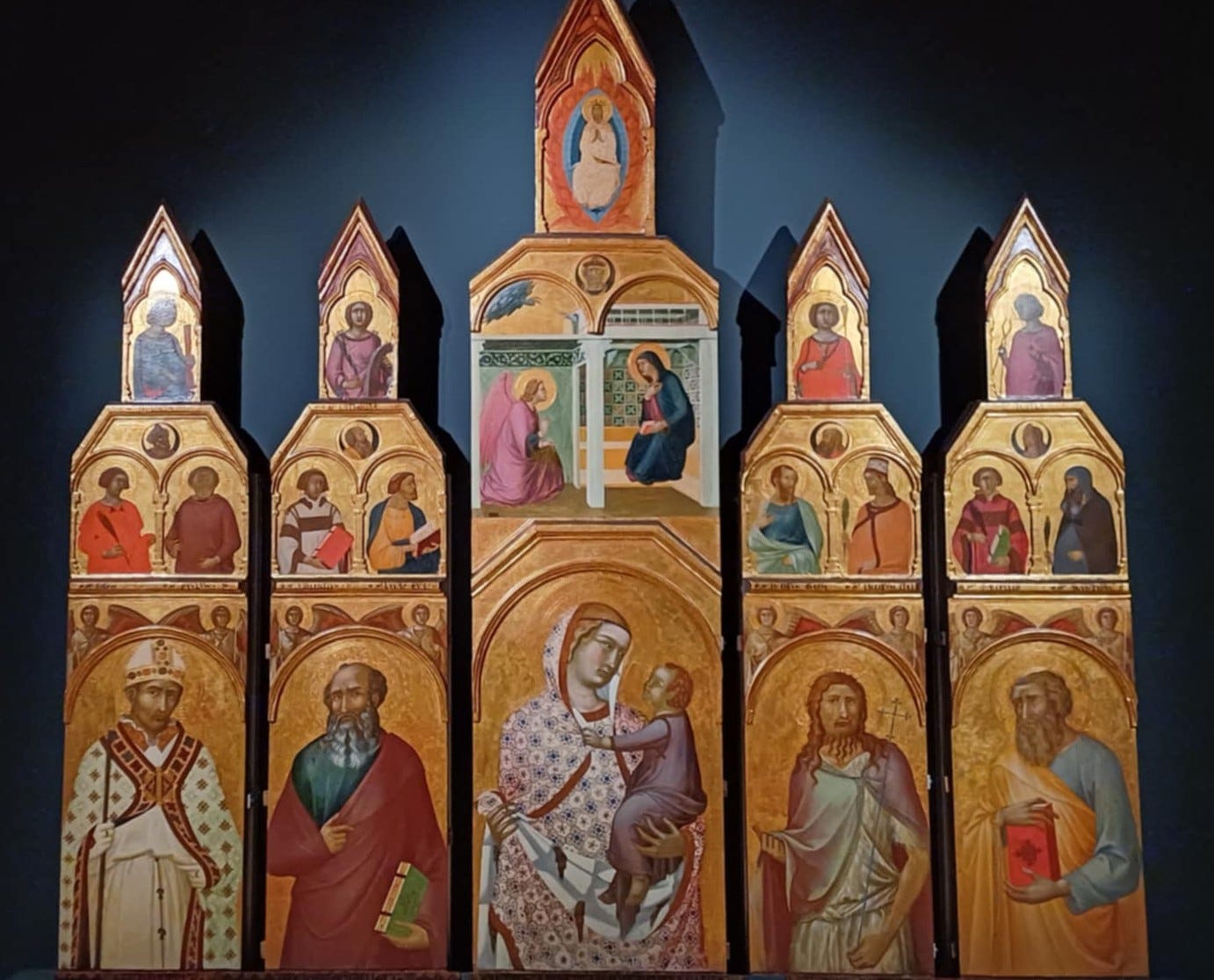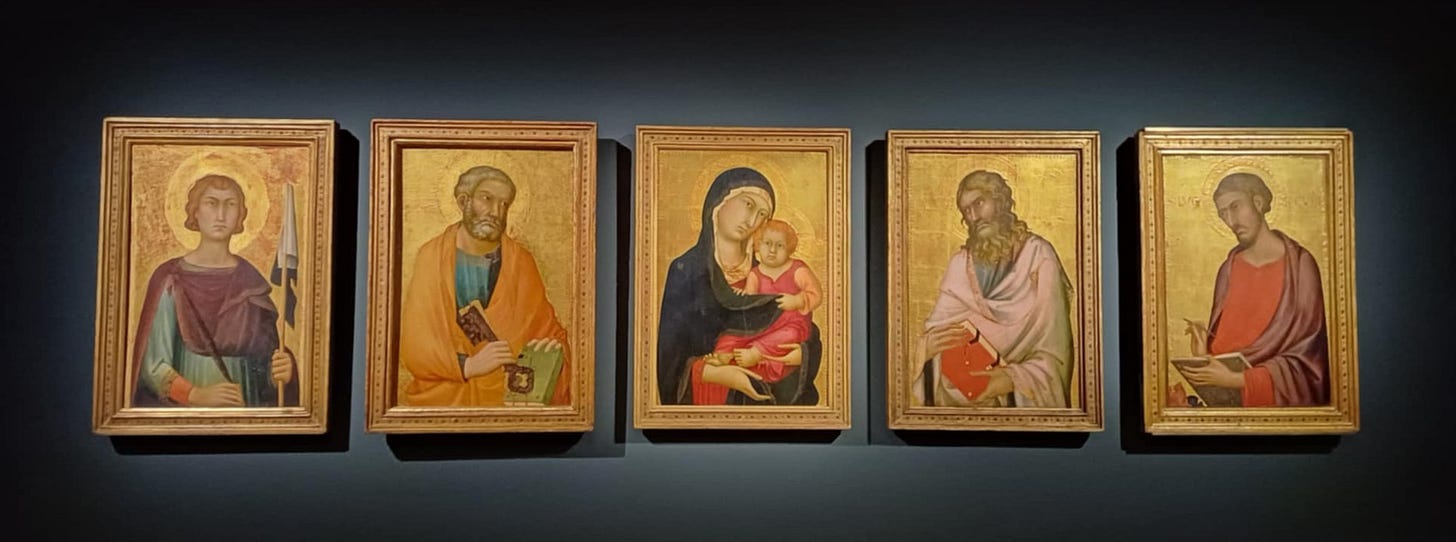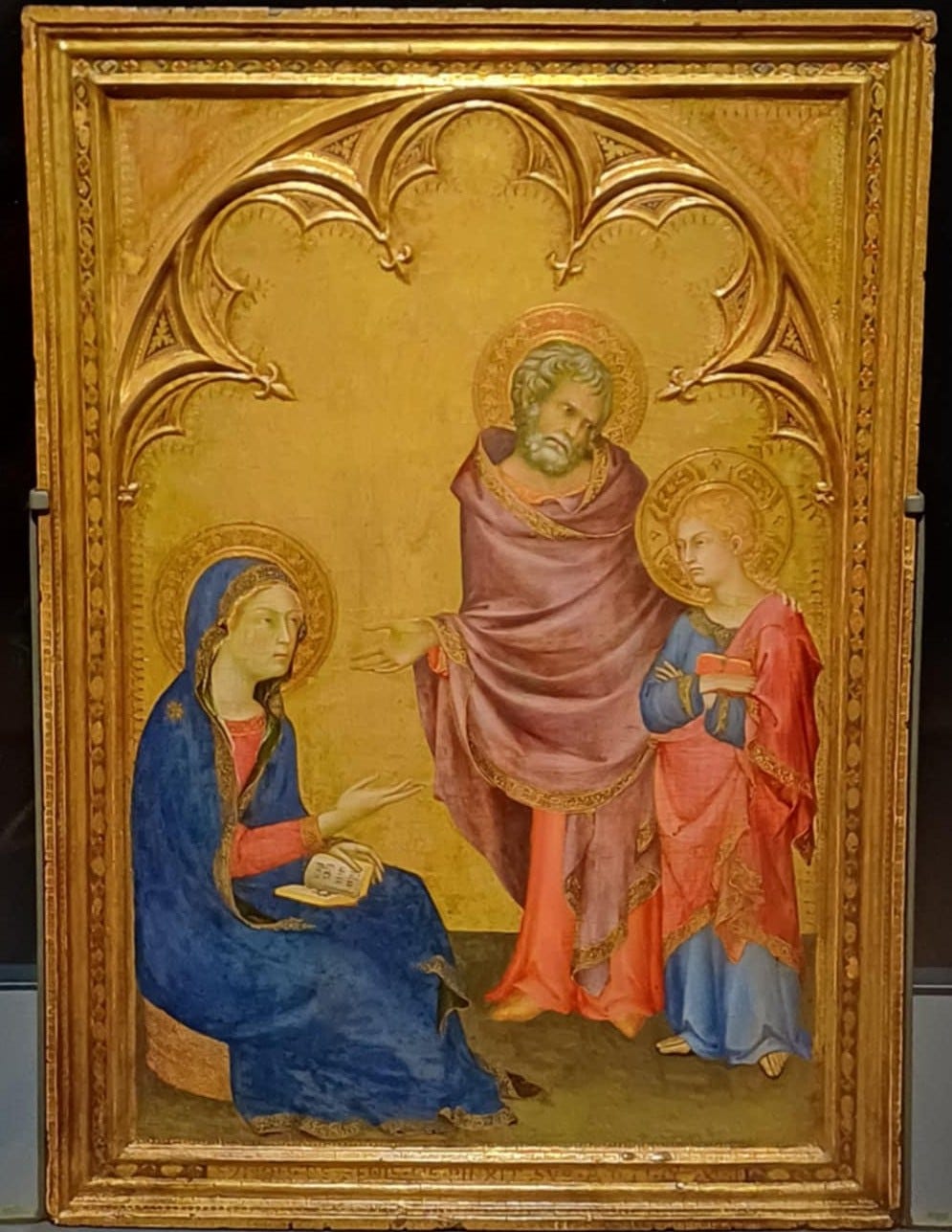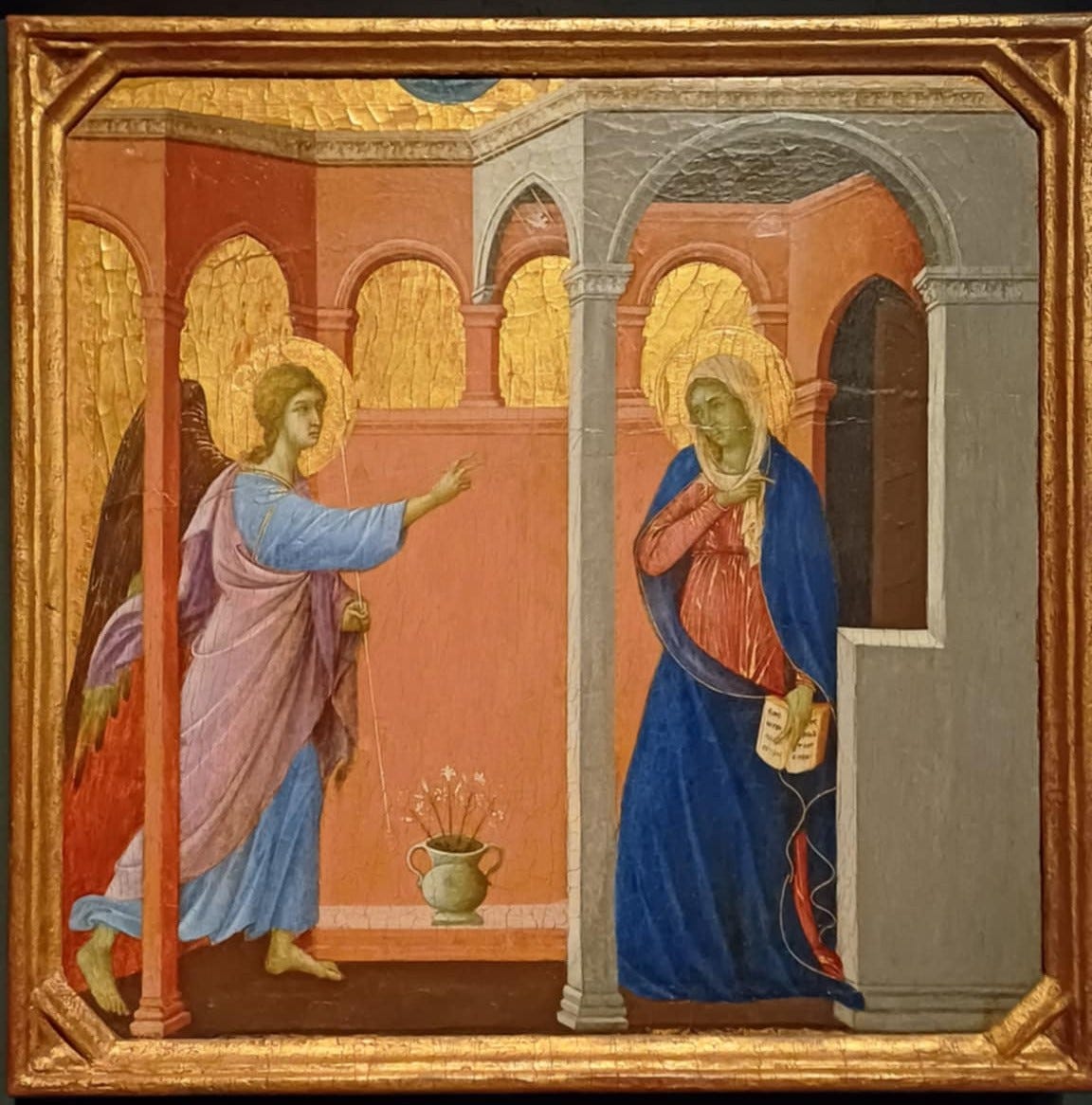Siena: The Rise of Painting
A completely dazzling exhibition (and a Pre-Raphaelite connection. What did you expect?!)
I didn’t think I’d get to see this exhibition, which closes on June 22nd (go and see it before then!) but I had a spare hour in London and couldn’t resist, especially after hearing about it from Caroline Campbell, one of the curators, at the Association for Art History conference. The premise of the exhibition is that Siena, in Tuscany, at the beginning of the 14th century provided conditions for the development of art such as the world had never seen. To summarise, it was a wealthy and religious place, and the combination provided both inspiration and the money to innovate. The results are dazzling.
The exhibition focuses on four particular painters: Duccio, Simone Martini and Pietro and Ambrogio Lorenzetti, and includes works not seen in London before, as well as a number of objects, including glorious, glowing enamels, textiles and metalwork. The introductory panel suggests that the city shows an entirely new way of painting, and that ‘They paint with a drama that no one has seen before. Faces show emotion. Bodies move in space. Stories flow across panels in colourful scenes.’ This isn’t an exaggeration; the work is sophisticated, rich in detail, full of movement and life. For every work there is a tiny detail to focus on, indicating the ways in which the works represent the life of the city and its devotions in every respect.
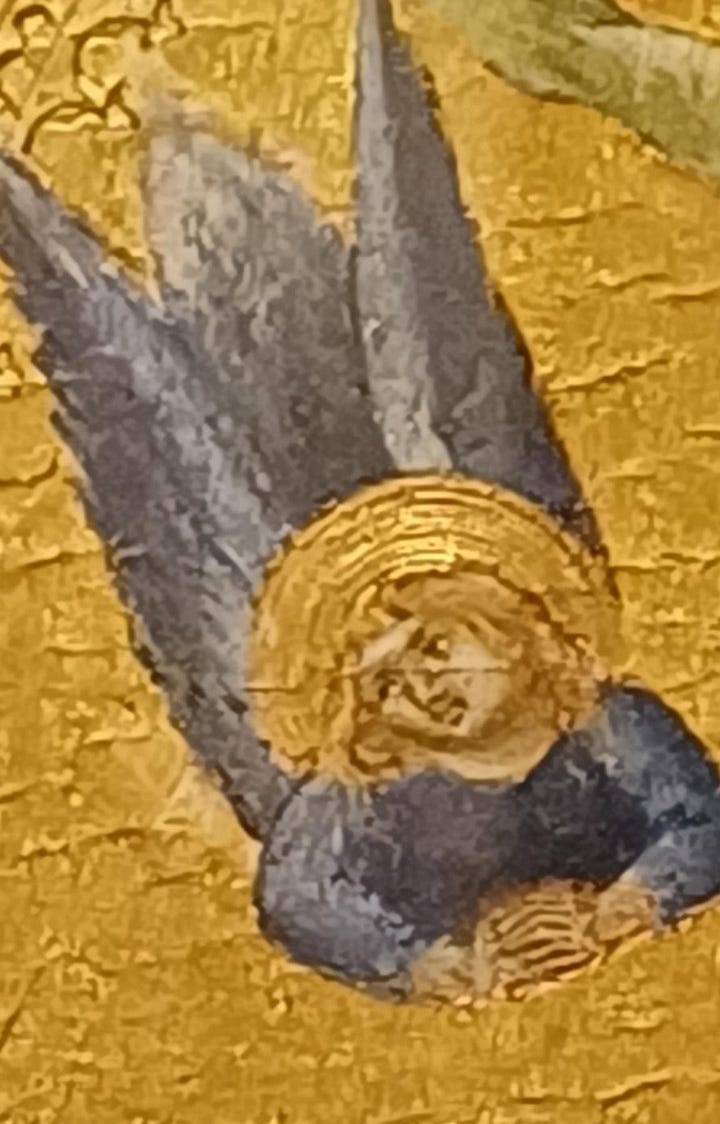
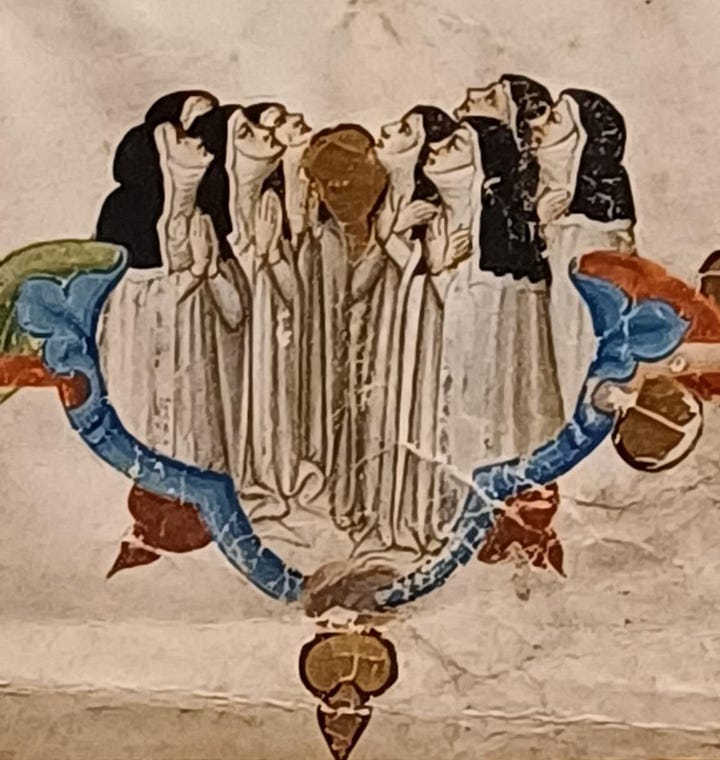
Many panels are reunited here for the first time in centuries, and the effect of these panels along with the overall effect of the exhibition is stunning. The walls are dark and the lighting low, and though it was quite busy when I went there was a reverent hush in the rooms. In this atmosphere, the paintings with their gilding, their jewel colours and ornate gold frames seem to glow with a spiritual light which was, no doubt, the original intention. Most objects and paintings here were intended for the private devotions of wealthy patrons or for churches and public buildings, so there is both public and private art here, and every object is imbued with a moving spiritual emotion.
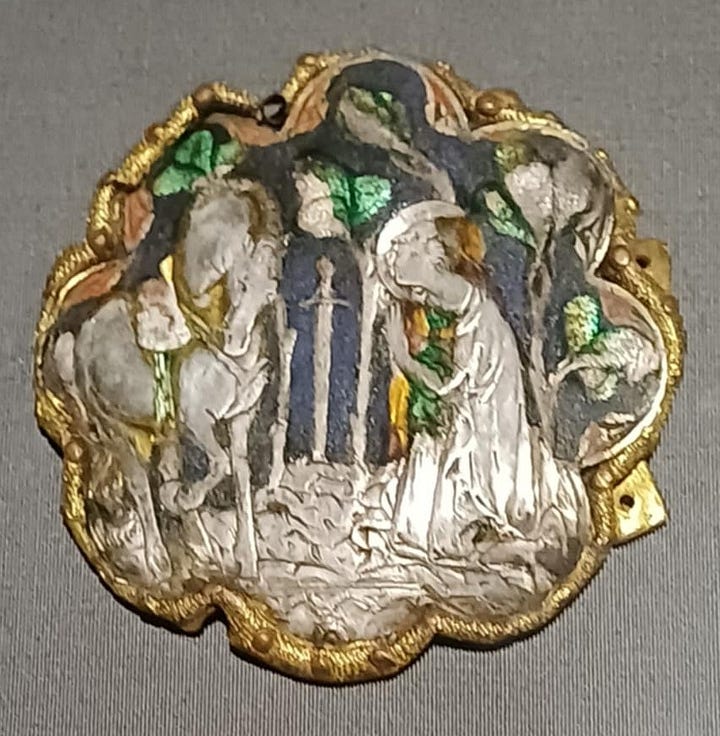
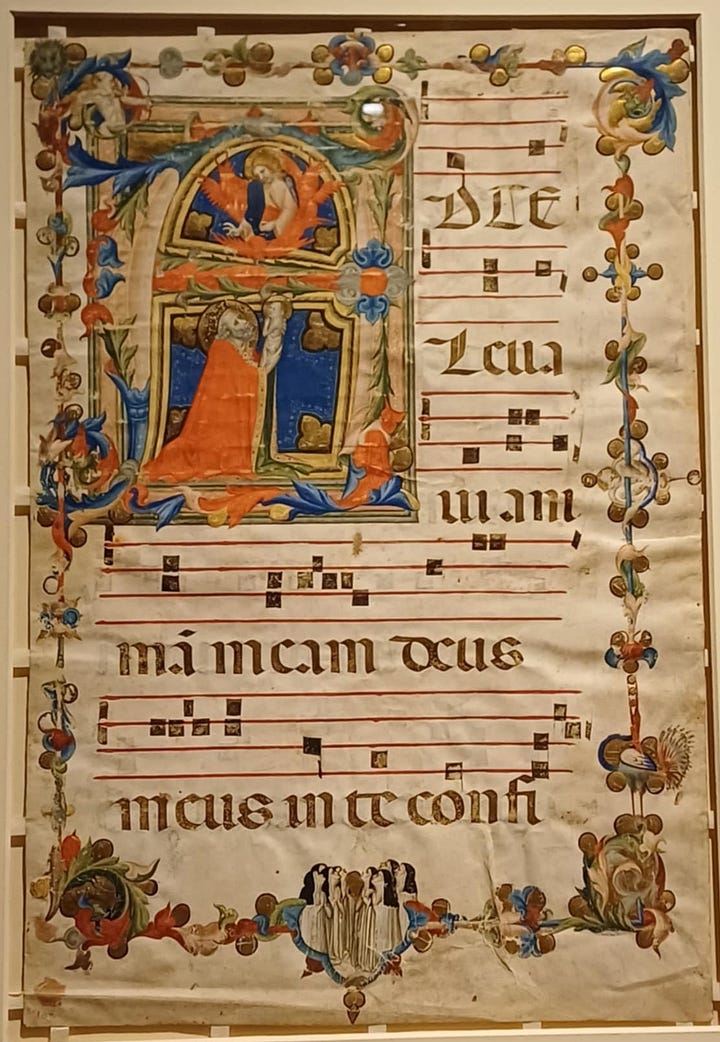
This beauty, along with innovative techniques and forms, as well as artistic developments in the expression of faith through human emotion, is derived from the freedom to experiment in a city with a belief in the power of art and the wealth to support artists and craftspeople. I left the exhibition thinking about how much impact it has on art when society values it (and not just financially).
There is always the delightfully unexpected to be found, too. From the starry ceilings of interiors in biblical scenes, to the rebellious teenage Christ depicted by Simone Martini (below), every item repays close attention. Martini’s painting Christ Discovered in the Temple (1342) is described by the label as ‘a universal story of unexplained absence, parental worry and teenage rebellion’, and while that might not be what you expect of this scene, a close look at the faces indicate that this is a familiar situation, down to the stubbornly folded arms of the young Christ.
Because my head is always full of the Pre-Raphaelites, I have to add that, of course, the Quattrocento painters (especially Botticelli, Fra Angelico and Giotto) were a particular inspiration for their work. These painters are the spiritual descendants of the Siena painters in this exhibition: their work would not have come about without these earlier works. Burne-Jones and other Pre-Raphs visited Italy, including Siena, and saw many works by these painters who are the true pre-Raphael artists, whose legacy is the history of Western art. And in the glowing colours, the tiny details, the flowing draperies and the elaborate frames of the Siena painters we can see the inspiration for Pre-Raphaelitism.
Burne-Jones came home from Tuscany saying ‘I want big things to do, and vast spaces, and for common people to see them and say oh! Only oh!’
I am still saying ‘Oh!’ about this exhibition.
